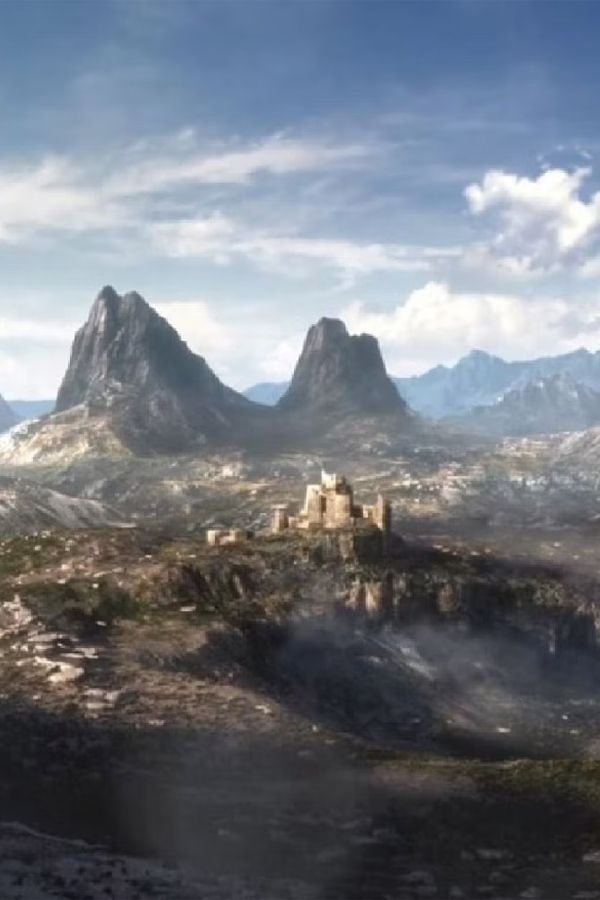Highlights
- The worlds of The Elder Scrolls, such as in Oblivion and Skyrim, don’t go far enough in reacting to player choice, resulting in a lack of impact on the game world.
- In Oblivion, despite dramatic events like Mehrunes Dagon’s attack on the Imperial City, the environment quickly reverts to normal, diminishing the sense of invasion and crisis.
- The Elder Scrolls 6 has the opportunity to use environmental storytelling to show the impact of player choices, such as depicting damaged buildings and ruined landscapes, and going beyond single moments to show real consequences.
One of the characteristics that makes video game storytelling stand out from other mediums of storytelling is how the world changes and responds to the player’s choices and actions. This is most often reflected in the NPCs who inhabit the world and the world itself. As an open-world RPG, the worlds of The Elder Scrolls should serve this characteristic, but they often don’t go as far as they should when it comes to reacting to player choice, for a number of reasons. The Elder Scrolls: Oblivion and Skyrim both had this problem, and it’s something that The Elder Scrolls 6 needs to fix.
Bethesda Is at a Fork in The Road With The Elder Scrolls 6
The Elder Scrolls 6 should be the next full release from Bethesda, and how the developer handles the game’s image is key to its success.
The Imperial City After the Oblivion Crisis
Changes in Cyrodiil During Oblivion’s Story
Cyrodiil undergoes several changes according to where the player is in Oblivion‘s main story. Kvatch becomes uninhabitable, and more Oblivion Gates open after the main storyline quest Dagon Shrine. NPCs also react to the Hero of Kvatch’s actions, whether they be related to a guild, side quest, or main storyline. Unfortunately, despite the detail that went into these changes, the biggest upheaval of all — the Daedric Prince Mehrunes Dagon’s attack on the Imperial City — doesn’t result in much change at all for the Empire’s capital city.
At the climax of the story, Mehrunes Dagon and the forces of Oblivion pour onto the streets of the Imperial City in a massive attack. The Imperial City is on fire during the attack, with random leveled Daedra wantonly attacking NPCs. The battle culminates in Martin Septim mantling the divine Akatosh and battling Mehrunes Dagon in a monstrous duel.
Everything Reverts in Oblivion
While all of this is dramatic and epic, the abrupt return to normalcy in the aftermath of such destruction is very jarring. The only real change to the environment is the new dragon statue of Akatosh in the Temple of One as well as the Temple’s partial destruction, with the Imperial City returning to normalcy quickly after the Oblivion Crisis ends. Rather than feeling as though Tamriel had just been invaded by evil forces from another dimension, Cyrodiil itself remained unchanged in the wake of the Oblivion Crisis.
The Problem Persists in Skyrim
Skyrim also had this problem where the landscape of the world didn’t show any impact after significant events in the game. When Whiterun was invaded during the Civil War storyline, the city is shown to be in flames during the quest itself, but returns to normalcy very quickly in the aftermath, with the NPCs not acknowledging the Dragonborn’s role in the conflict. None of Skyrim‘s cities are affected by the dragon attacks, and defeating Alduin has no impact on Skyrim beyond a decrease in the chances of dragons spawning in-game.
How The Elder Scrolls 6 Could Use Environmental Storytelling
The Elder Scrolls 6 has the chance to elevate its narrative by using environmental storytelling. The Elder Scrolls consistently deals with epic, world-shaking events that are more than capable of transforming the landscape. If The Elder Scrolls 6 continues this tradition, players need to be able to see the impact they have on the world around them, even if the story guides them in one direction.
Examples of how The Elder Scrolls 6 could transform the storytelling in The Elder Scrolls include depicting damaged buildings after battles in cities, newly ruined landscapes, and destroyed forests. Depending on player choices and their role in the story, they could minimize the damage or take steps to reverse it, much like showing Kvatch’s recovery after the completion of the main storyline in Oblivion. These are just some of the ways The Elder Scrolls 6 can go beyond single moments and show real impact.

The Elder Scrolls 6
- Developer(s)
- Bethesda Game Studios
- Publisher(s)
- Bethesda Softworks